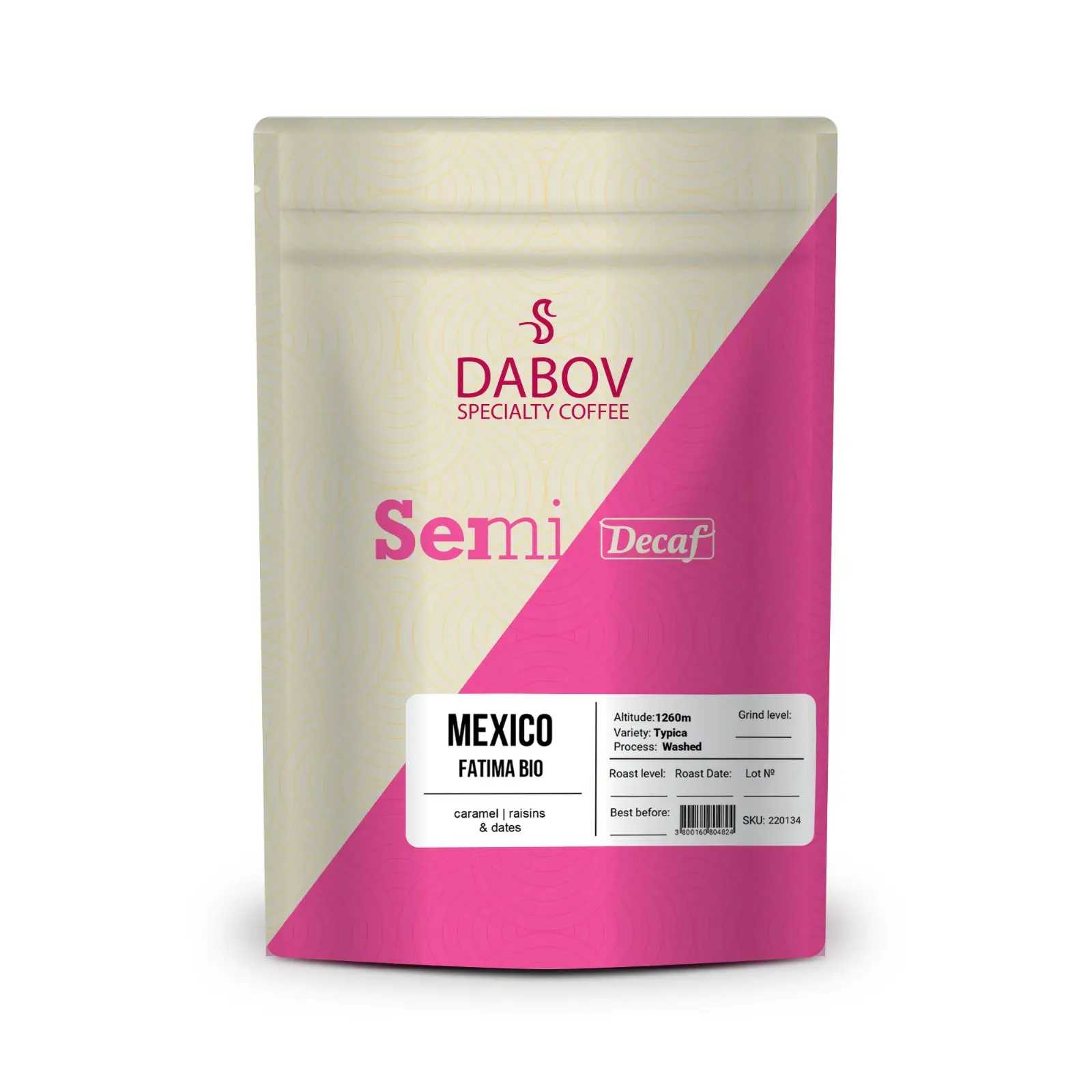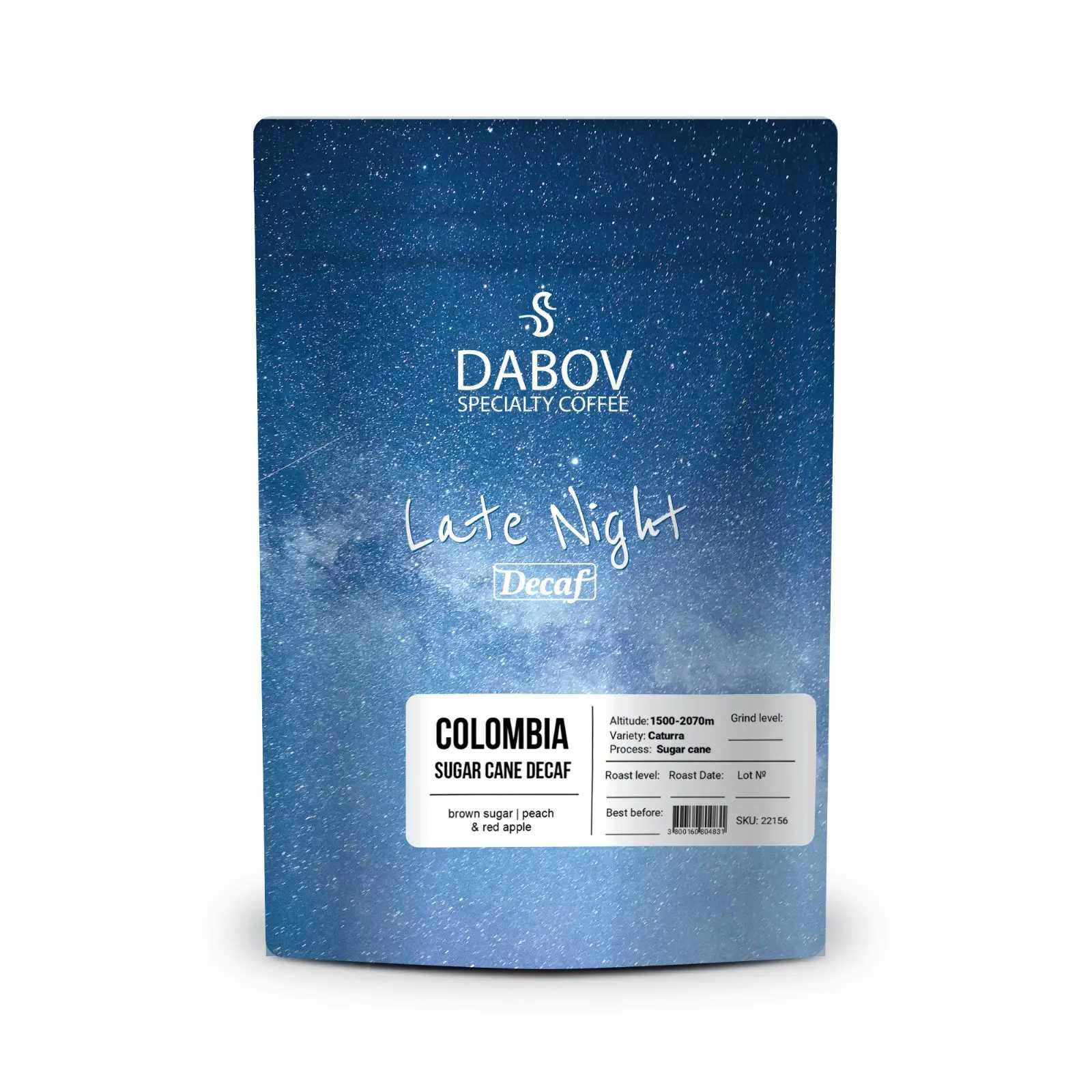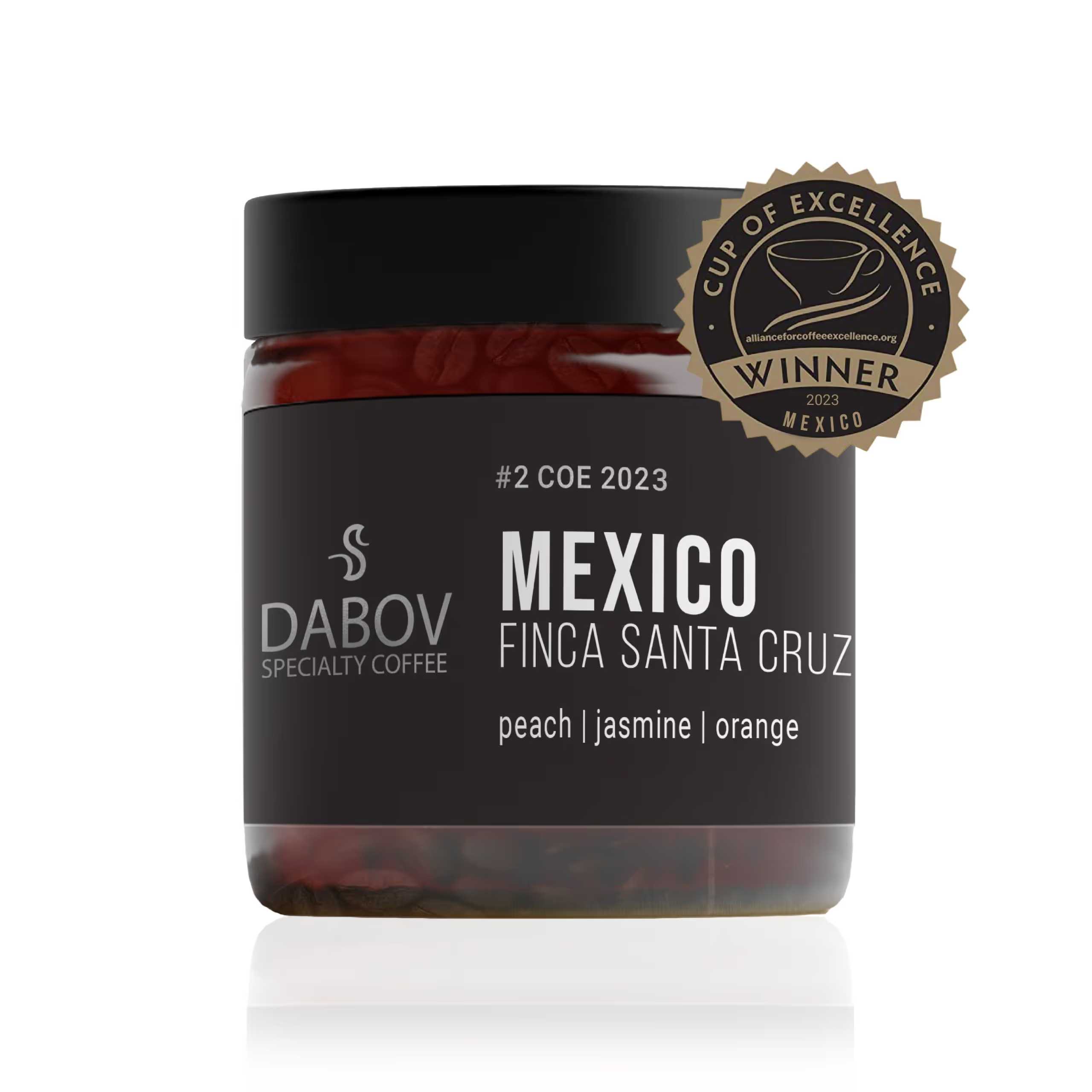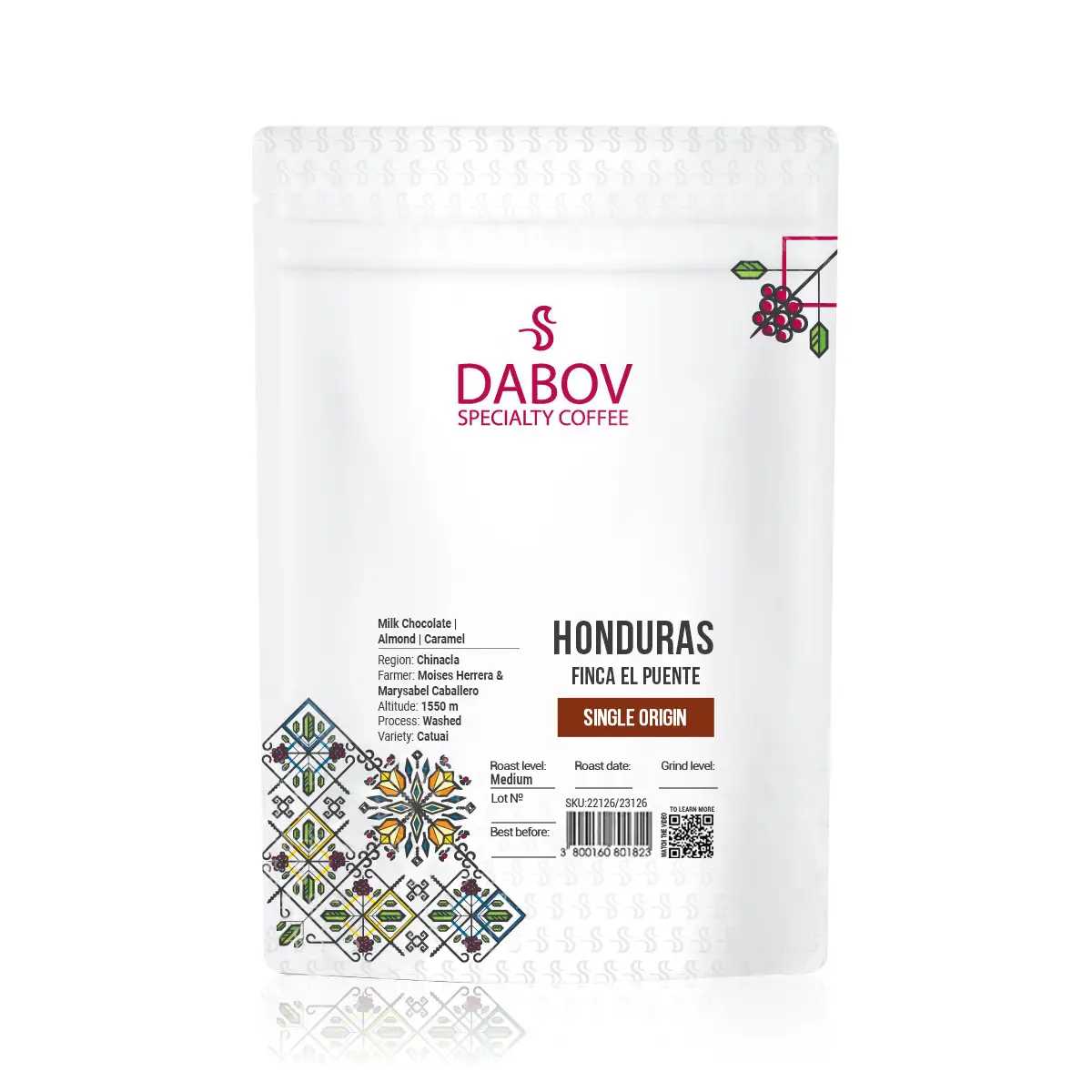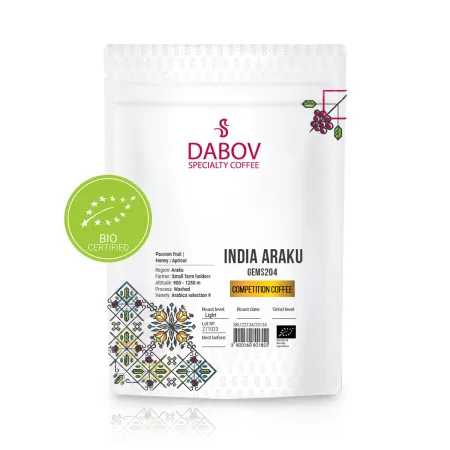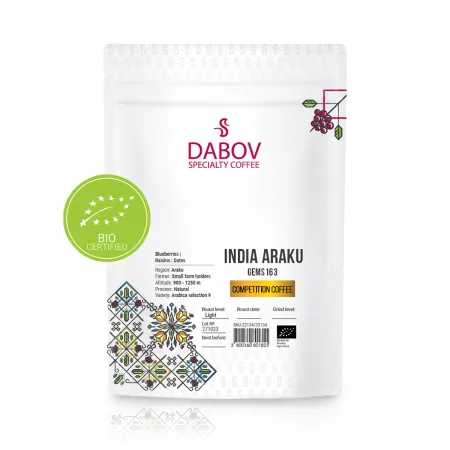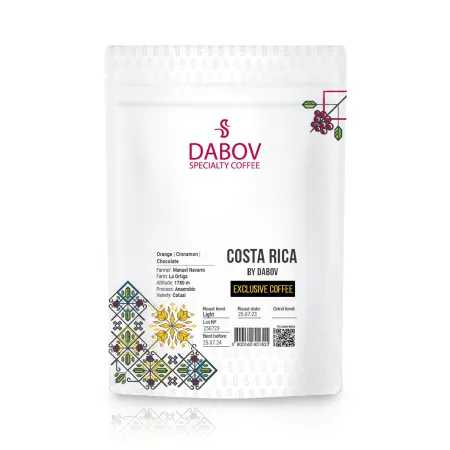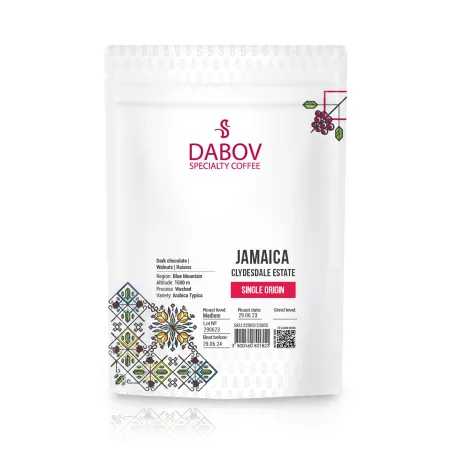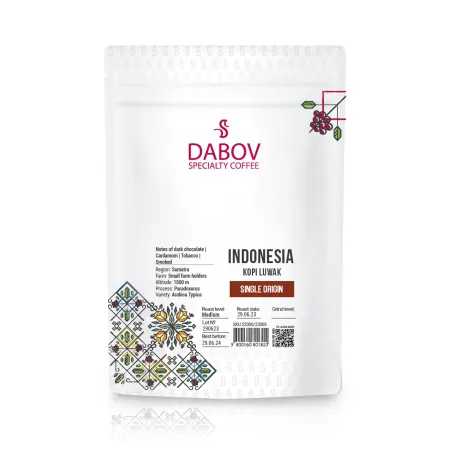How Processing Methods Affect Coffee Flavor Profiles
Unlocking the intricacies of coffee flavor, this article delves into how processing methods sculpt the final taste of your brew. From understanding the washed, natural, and honey processes to examining regional influences and farmer roles, we explore the journey of coffee from bean to cup. Discover how these methods bring forth unique flavor profiles—be it the bright acidity of washed coffee or the fruity complexity of natural brews. With insights on sustainable practices and tasting guides, you'll gain a holistic view of coffee processing. Whether you're a casual sipper or a dedicated enthusiast, this deep dive into coffee processing can enhance your appreciation for your next cup.
Coffee, a beverage cherished by millions worldwide, is far more complex than many realize. The journey from bean to cup is a intricate process, with each step playing a crucial role in determining the final flavor profile. Among these steps, coffee processing methods stand out as particularly influential in shaping the taste, aroma, and overall sensory experience of your daily brew. This article delves deep into the world of coffee processing, exploring how different techniques impact flavor profiles and why understanding these methods can elevate your coffee appreciation to new heights.
Introduction
Coffee processing is the crucial stage that bridges the gap between harvesting coffee cherries and roasting the beans. It's during this phase that the seeds (what we call coffee beans) are extracted from the fruit and prepared for export. The method chosen for this process significantly influences the coffee's final taste, acidity, body, and aroma. As coffee enthusiasts and professionals alike seek to understand and appreciate the nuances of their favorite beverage, knowledge of processing methods becomes invaluable.
The journey of coffee from farm to cup involves several stages: cultivation, harvesting, processing, roasting, and brewing. While each stage contributes to the final product, processing is particularly fascinating because it's where the inherent flavors of the coffee begin to take shape. The decisions made during this phase can either highlight or mute certain characteristics of the bean, leading to a wide spectrum of flavor possibilities.
Section 1: Understanding Coffee Processing Methods
1.1 What are Coffee Processing Methods?
Coffee processing methods refer to the techniques used to remove the layers surrounding the coffee bean (seed) within the coffee cherry and prepare it for roasting. These methods are not merely functional but are critical in developing the coffee's flavor profile. The choice of processing method can enhance certain attributes of the coffee, such as acidity, sweetness, or body, while potentially subduing others.
The process begins immediately after harvesting, as coffee cherries are highly perishable. The main objective is to remove the pulp (also known as cascara) and mucilage surrounding the beans, then dry them to the appropriate moisture content for storage and transport. However, the way this is achieved varies significantly between methods, each imparting unique characteristics to the bean.
Understanding these methods is crucial for everyone involved in the coffee supply chain, from farmers and roasters to baristas and consumers. For farmers, the choice of processing method can significantly impact the marketability and value of their crop. For roasters, it informs their roasting profiles and blending decisions. For baristas and consumers, it provides insight into why coffees taste the way they do and how to select beans that align with personal preferences.
1.2 The Main Types of Coffee Processing
While there are numerous variations and innovations in coffee processing, three main methods form the foundation of most techniques: washed (or wet) process, natural (or dry) process, and honey process. Each of these methods has its own set of procedures, equipment requirements, and environmental considerations.
- Washed Process: Also known as the wet process, this method involves removing the cherry's skin and pulp before the drying phase. The beans are fermented to remove the mucilage, then washed and dried. This process typically results in coffee with a clean, bright flavor profile and pronounced acidity.
- Natural Process: In this method, also called the dry process, the entire coffee cherry is dried with the bean inside. This is the oldest processing method and requires less water than the washed process. Natural processed coffees often have a fuller body, lower acidity, and more complex, fruity flavors.
- Honey Process: A relatively newer method, the honey process is a hybrid of washed and natural processes. The skin and some or all of the mucilage are removed before drying. The amount of mucilage left on the bean determines whether it's classified as white, yellow, red, or black honey process. This method often produces coffees with a balance of acidity and sweetness, with varying levels of fruitiness depending on how much mucilage is left on the bean.
Each of these methods has numerous variations and sub-categories, reflecting the creativity and experimentation of coffee producers worldwide. For instance, the anaerobic fermentation process, where coffee is fermented in a sealed tank without oxygen, is gaining popularity for its ability to produce unique and intense flavor profiles.
1.3 Historical Context of Coffee Processing Techniques
The evolution of coffee processing methods is a fascinating journey that mirrors the global spread of coffee cultivation and consumption. The natural process, being the simplest and requiring the least equipment, was likely the first method used when coffee was discovered in Ethiopia. As coffee spread to other parts of the world, new processing methods were developed to suit different climates, available resources, and market demands.
The washed process, for example, is believed to have been developed in the 17th century in Yemen, as a way to prevent the beans from fermenting during sea transport. This method then spread to other coffee-growing regions, becoming particularly popular in Latin America due to its ability to produce consistently clean-tasting coffees.
The honey process is a more recent innovation, originating in Costa Rica and spreading to other Central American countries. It was developed as a way to reduce water usage while still achieving some of the clean characteristics of washed coffees.
Interestingly, the geographical distribution of processing methods has historically been influenced by climate and infrastructure. Regions with limited access to water, such as parts of Ethiopia and Yemen, have traditionally favored the natural process. In contrast, countries with abundant water resources and the necessary infrastructure, like Colombia and Kenya, have leaned towards the washed process.
Today, however, we're seeing a shift in this paradigm. With increasing market demand for diverse flavor profiles and a growing appreciation for the nuances imparted by different processing methods, many coffee-producing regions are experimenting with methods that may not have been traditional to their area. This experimentation is leading to exciting new flavor profiles and challenging long-held assumptions about what coffees from certain regions "should" taste like.
Section 2: The Impact of Processing on Coffee Flavor Profiles
2.1 How Processing Methods Influence Flavor
The influence of processing methods on coffee flavor is profound and multifaceted. Each method interacts differently with the bean's cellular structure and chemical composition, leading to distinct flavor outcomes. Understanding this interaction requires a brief look at the chemistry of coffee.
Coffee beans contain a complex mix of compounds including sugars, acids, proteins, and lipids. During processing, these compounds undergo various changes due to factors like fermentation, oxidation, and enzymatic reactions. The extent and nature of these changes depend largely on the processing method used.
For instance, in the washed process, the quick removal of the cherry's flesh limits the transfer of fruit sugars to the bean. This results in a coffee where the bean's inherent flavors are more prominent, often described as "clean" or "bright." The fermentation stage in this process can also contribute to the development of complex acidity.
In contrast, the natural process allows for a prolonged contact between the bean and the cherry's flesh during drying. This extended contact enables the migration of sugars and other compounds from the fruit into the bean, often resulting in a sweeter, fruitier cup with a heavier body. The slower drying process can also lead to the development of fermented flavors, which can be desirable when controlled properly.
The honey process offers a middle ground, with the partial removal of mucilage allowing for some fruit-sugar transfer while still maintaining a degree of clarity in the cup. The amount of mucilage left on the bean during drying (which determines whether it's a white, yellow, red, or black honey process) directly correlates with the intensity of sweetness and fruitiness in the final cup.
It's important to note that while processing methods have a significant impact on flavor, they interact with other factors such as the coffee variety, growing conditions, and roasting profile. A skilled coffee producer takes all these factors into account when deciding on a processing method, aiming to highlight the best qualities of their particular crop.
2.2 Flavor Profiles of Common Processing Methods
2.2.1 Washed Process
The washed process typically produces coffees with a clean, bright flavor profile. These coffees often exhibit:
- High acidity: Washed coffees are known for their crisp, vibrant acidity. This can range from a gentle citrus-like brightness to a more intense, almost effervescent quality.
- Clarity of flavor: The quick removal of fruit flesh allows the inherent flavors of the bean to shine through. This often results in more distinct and identifiable flavor notes.
- Light to medium body: Washed coffees generally have a lighter body compared to other processing methods, contributing to their clean mouthfeel.
- Floral and citrus notes: Many washed coffees exhibit delicate floral aromas and citrusy flavors, particularly those from high-altitude regions.
- Consistency: The controlled nature of the washed process often leads to more consistent flavor profiles from batch to batch.
Examples of popular washed coffees include Kenyan AA, known for its bright blackcurrant notes, and Colombian Supremo, appreciated for its clean, balanced profile with hints of nuts and chocolate.
2.2.2 Natural Process
Natural processed coffees are known for their complex, fruity profiles. Typical characteristics include:
- Full body: The extended contact with the cherry's flesh often results in a heavier, more syrupy body.
- Lower acidity: While still present, acidity in natural coffees is often perceived as softer and rounder compared to washed coffees.
- Intense sweetness: The migration of fruit sugars into the bean during drying can lead to a pronounced sweetness in the cup.
- Complex fruit notes: Natural coffees often exhibit a wide range of fruit flavors, from berry and tropical fruit to wine-like fermented notes.
- Unique "funky" qualities: Some natural coffees develop unconventional flavors that can be polarizing, described as "wild" or "funky" by enthusiasts.
Ethiopian Sidamo and Yirgacheffe naturals are classic examples, known for their intense blueberry and strawberry notes. Brazilian naturals are also popular, often exhibiting nutty, chocolatey profiles with a subtle fruitiness.
2.2.3 Honey Process
Honey processed coffees offer a middle ground between washed and natural coffees, with flavors varying based on the amount of mucilage left on the bean:
- Balanced sweetness and acidity: Honey process coffees often strike a pleasant balance between the clean acidity of washed coffees and the sweetness of naturals.
- Syrupy body: The partial retention of mucilage often results in a smooth, syrupy mouthfeel.
- Subtle fruit notes: While not as intense as naturals, honey processed coffees can exhibit delicate fruit flavors.
- Caramel and honey-like sweetness: As the name suggests, these coffees often have a distinct honey-like sweetness, sometimes accompanied by caramel notes.
- Complexity: Honey processed coffees can offer a complex flavor profile that evolves as the coffee cools.
Costa Rican and El Salvadoran honey processed coffees are particularly renowned, often showcasing flavors of stone fruits, caramel, and honey with a silky mouthfeel.
Section 3: Analyzing Coffee Taste Profiles by Region
3.1 The Influence of Processing by Country
The choice of processing method in different coffee-producing countries is influenced by a variety of factors, including climate, tradition, available resources, and market demand. This regional variation in processing methods contributes significantly to the distinct flavor profiles associated with coffees from different parts of the world.
In Ethiopia, for instance, both washed and natural processes are common, with each method highlighting different aspects of Ethiopian coffee's complex flavor profile. The natural process, which is traditional in many parts of Ethiopia, often results in the intensely fruity, wine-like flavors that Ethiopian coffees are famous for.
Central American countries like Costa Rica and El Salvador have been at the forefront of experimenting with honey processing. This method allows them to produce coffees with a unique flavor profile that sets them apart in the specialty coffee market.
In Colombia, the washed process has long been the norm, contributing to the country's reputation for clean, balanced coffees. However, in recent years, there has been increasing experimentation with natural and honey processes, particularly among specialty producers looking to differentiate their offerings.
Brazil, the world's largest coffee producer, has traditionally favored the natural process due to the country's climate and the scale of its production. This has contributed to the classic Brazilian coffee profile: low acidity, full body, and nutty, chocolatey flavors.
In Kenya, the washed process dominates, contributing to the bright, acidic profile that Kenyan coffees are known for. The country's unique double fermentation process, where the coffee is fermented, washed, then fermented again, adds to the complexity and intensity of flavors in Kenyan coffees.
Indonesia, particularly regions like Sumatra, is known for its unique "wet-hulled" process, a variation of the washed process where the parchment is removed from the bean while it's still at a high moisture content. This contributes to the full body and earthy, herbal flavors often associated with Indonesian coffees.
3.2 Case Studies: Regional Flavor Profiles
3.2.1 Ethiopian Coffee
Ethiopia, the birthplace of coffee, offers a fascinating case study in how processing methods interact with unique local varieties to produce distinctive flavor profiles.
Natural Process in Ethiopia:Ethiopian natural processed coffees, particularly from regions like Sidamo and Yirgacheffe, are renowned for their intense fruitiness and complex flavor profiles. These coffees often exhibit:
- Pronounced berry notes: Blueberry and strawberry flavors are common and often intense.
- Floral aromatics: Jasmine and bergamot-like fragrances are frequently noted.
- Wine-like qualities: Some Ethiopian naturals have a fermented grape or wine-like character.
- Syrupy body: The natural process often results in a heavier, more syrupy mouthfeel.
- Complex acidity: While generally lower than in washed Ethiopian coffees, the acidity in naturals can be complex, often described as wine-like or tropical fruit-like.
A prime example is the Ethiopian Yirgacheffe Natural, which often tastes like a cup of blueberries with floral overtones and a syrupy body.
Washed Process in Ethiopia:Washed Ethiopian coffees, while less common than naturals, offer a different expression of Ethiopian coffee's inherent qualities:
- Bright, clean acidity: Often described as lemony or tea-like.
- Delicate floral notes: Jasmine, bergamot, and sometimes rose-like flavors are common.
- Light to medium body: Generally lighter than their natural-processed counterparts.
- Citrus and stone fruit flavors: Notes of lemon, peach, and apricot are often present.
- Clarity of flavor: The clean profile allows for more distinct flavor separation.
An Ethiopian Yirgacheffe Washed might present with flavors of lemon, jasmine, and peach, with a tea-like body and bright, clean finish.
The stark difference between these two profiles from the same region highlights the profound impact that processing methods can have on flavor.
3.2.2 Colombian Coffee
Colombia, with its diverse microclimates and predominantly washed processing, provides another interesting case study.
Washed Process in Colombia:The washed process has been the standard in Colombia for decades, contributing to the country's reputation for clean, balanced coffees. Typical characteristics include:
- Bright, citrusy acidity: Often described as lemony or orange-like.
- Balanced sweetness: Usually present as caramel or brown sugar notes.
- Medium body: Smooth and balanced, neither too light nor too heavy.
- Nutty undertones: Almond or walnut notes are common.
- Chocolate notes: Particularly in coffees from lower altitudes.
A classic example is Colombian Supremo, known for its well-balanced profile with notes of nuts, chocolate, and a bright citrus acidity.
Emerging Trends in Colombian Processing:In recent years, some Colombian producers have been experimenting with natural and honey processes, creating new flavor profiles:
- Natural processed Colombian coffees often exhibit more intense fruit notes, sometimes with tropical fruit flavors like mango or papaya.
- Honey processed Colombian coffees tend to have a more pronounced sweetness, often with stone fruit flavors and a syrupy body.
These experiments are expanding the range of flavors associated with Colombian coffee, challenging traditional expectations and exciting specialty coffee enthusiasts.
The contrast between traditional washed Colombian coffees and these newer processing experiments demonstrates how processing methods can be used to highlight different aspects of a coffee's inherent flavors, even within the same country or region.
Section 4: Coffee Production Techniques and Their Role in Flavor Development
4.1 The Role of Farmers in Processing Choices
Coffee farmers play a crucial role in determining the final flavor profile of their coffee through their processing choices. These decisions are influenced by a variety of factors, including:
- Environmental Conditions: The local climate, altitude, and available water resources significantly impact processing choices. For instance, areas with limited water access might lean towards natural processing, while regions with abundant water might prefer washed methods.
- Equipment and Infrastructure: The availability of processing equipment and infrastructure influences what methods are feasible. Washed processing requires more specialized equipment, while natural processing can be done with minimal infrastructure.
- Labor Availability: Different processing methods require varying amounts of labor. Natural processing is generally less labor-intensive than washed or honey processing.
- Market Demand: Farmers often adjust their processing methods based on what buyers are looking for. As the specialty coffee market has grown, there's been increased demand for unique flavor profiles, encouraging experimentation with different processing techniques.
- Tradition and Experience: Many farmers have traditional methods passed down through generations. However, increasing knowledge about the impact of processing on flavor has led many to experiment with new techniques.
- Quality Control: Different processing methods require different levels of quality control. Washed processing generally allows for more consistent quality, while natural processing can produce exceptional results but requires careful monitoring to prevent defects.
- Flavor Goals: Farmers with a deep understanding of how processing affects flavor may choose methods that highlight the best qualities of their particular crop or create a desired flavor profile.
For example, a farmer in Ethiopia growing heirloom varieties at high altitudes might choose natural processing to enhance the inherent fruitiness of the beans. In contrast, a Colombian farmer aiming for a clean, bright profile might opt for washed processing.
Increasingly, farmers are also experimenting with variations on traditional methods. For instance, extended fermentation times in washed processing or controlled yeast inoculation during fermentation are being used to develop unique flavor profiles.
The choices made by farmers during processing have a direct and significant impact on the final cup quality. As such, many specialty coffee roasters are developing close relationships with farmers, sometimes even collaborating on processing experiments to achieve specific flavor outcomes.
4.2 Sustainable Practices in Coffee Processing
Sustainability in coffee processing is becoming increasingly important, both for environmental reasons and due to growing consumer demand for ethically produced coffee. Sustainable processing practices can also have a significant impact on coffee flavor. Here are some key areas where sustainability intersects with processing and flavor development:
- Water Usage: Traditional washed processing requires significant amounts of water, which can be problematic in water-scarce regions. Many producers are adopting water-efficient washing techniques or opting for natural or honey processing methods. These choices not only conserve water but can also lead to different flavor profiles.
- Waste Management: Coffee processing produces significant organic waste, primarily in the form of pulp and mucilage. Proper management of this waste is crucial for environmental sustainability. Some innovative approaches include:
- Composting coffee pulp to use as fertilizer, which can enhance soil health and potentially influence future crop flavors.
- Using coffee cherry pulp to produce cascara, a tea-like beverage that provides an additional revenue stream for farmers.
- Energy Use: Mechanical drying of coffee beans can be energy-intensive. Solar drying techniques are being adopted where climate allows, reducing energy consumption. The slower, more variable drying process can influence the development of flavors in the beans.
- Eco-Pulpers: These machines significantly reduce water usage in washed processing while also separating the pulp more efficiently. This can lead to cleaner-tasting coffees with more uniform quality.
- Anaerobic Fermentation: This method, where coffee is fermented in a sealed, oxygen-free environment, not only produces unique flavor profiles but also reduces water usage and controls the release of fermentation byproducts into the environment.
- Organic Practices: While not directly related to processing, organic farming practices can influence the flavors developed during processing. For example, organically grown coffees may have different sugar content or acid composition, which can interact differently with various processing methods.
- Social Sustainability: Fair labor practices and community support are also part of sustainable coffee production. Well-trained, fairly compensated workers are more likely to implement processing methods correctly and consistently, leading to better quality control and flavor outcomes.
The impact of these sustainable practices on flavor can be significant. For instance, eco-pulpers often produce coffees with cleaner, more uniform flavors. Anaerobic fermentation can lead to unique, intense flavor profiles with heightened acidity and fruitiness. Natural processing, while water-efficient, produces the distinctive fruity, full-bodied profiles that many specialty coffee enthusiasts seek out.
As the coffee industry continues to grapple with the challenges of climate change and environmental degradation, these sustainable processing methods are likely to become more prevalent. This shift may lead to changes in the flavor profiles we associate with coffees from various regions, as well as the emergence of new, innovative flavor profiles.
Section 5: A Practical Coffee Processing Guide
5.1 How to Choose Coffee Based on Processing Method
Understanding how processing methods affect flavor can greatly enhance your coffee buying and tasting experience. Here's a guide to help you choose coffees based on their processing method:
- If you prefer bright, clean flavors with pronounced acidity:
- Look for washed processed coffees
- Good options include: Kenyan AA, Colombian Supremo, or Central American washed coffees
- Expect flavors like: citrus, floral notes, tea-like clarity
- If you enjoy full-bodied coffees with intense sweetness and fruity notes:
- Opt for natural processed coffees
- Try: Ethiopian Yirgacheffe or Sidamo naturals, Brazilian naturals
- Expect flavors like: berries, tropical fruits, wine-like qualities, sometimes "funky" or fermented notes
- If you want a balance between fruitiness and clarity:
- Explore honey processed coffees
- Look for: Costa Rican or El Salvadoran honey process coffees
- Expect flavors like: stone fruits, caramel, honey sweetness, with a syrupy body
- For those who enjoy experimental flavors:
- Seek out coffees processed using innovative methods like anaerobic fermentation or carbonic maceration
- These can come from various origins but are often highlighted as special micro-lots
- Expect intense, unique flavors that can range from boozy, wine-like notes to tropical fruit punch
- If you prefer traditional, chocolatey, nutty flavors:
- Look for natural processed coffees from Brazil or pulped natural coffees
- Expect flavors like: nuts, chocolate, caramel, with low acidity and full body
Remember, while processing method is a crucial factor, it's not the only one. The coffee's origin, variety, altitude, and roast level also play significant roles in determining the final flavor. Don't be afraid to experiment and try coffees processed in ways you're not familiar with – you might discover new favorites!
5.2 Tasting and Comparing Different Processing Methods
To truly appreciate the impact of processing methods on coffee flavor, it's beneficial to conduct comparative tastings. Here's a guide to help you set up and conduct your own processing method comparison:
- Choose Your Coffees:
- Ideally, select coffees from the same region or even the same farm, processed differently. For example, you might find an Ethiopian coffee available in both washed and natural versions.
- If that's not possible, choose coffees that represent distinct processing methods: a washed Colombian, a natural Ethiopian, and a honey processed Costa Rican, for instance.
- Ensure Proper Storage and Freshness:
- Use freshly roasted beans, ideally 7-14 days off roast.
- Store beans in airtight containers away from light, heat, and moisture.
- Use Consistent Brewing Methods:
- Use the same brewing method for all coffees. Pour-over methods like V60 or Chemex are great for highlighting differences in flavor profiles.
- Keep all variables constant: water temperature, coffee-to-water ratio, grind size, etc.
- Set Up Your Tasting:
- Prepare three cups of each coffee.
- Label cups to avoid confusion.
- Have clean spoons, water for rinsing, and a notepad for each taster.
- Conduct the Tasting:
- Start with aromatics: smell the dry grounds, then the wet grounds after brewing.
- Taste the coffees when hot, warm, and at room temperature, noting how flavors change.
- Use cupping techniques: slurp the coffee to spray it across your palate.
- What to Look For:
- Acidity: Is it bright and citrusy (typical of washed), or more subdued and wine-like (natural)?
- Sweetness: How intense is it? What type (fruity, caramel, honey-like)?
- Body: Is it light and tea-like (washed) or heavy and syrupy (natural/honey)?
- Flavor notes: What specific flavors can you detect? How do they differ between processing methods?
- Aftertaste: How long does the flavor linger? Is it clean or complex?
- Discuss and Compare:
- Share notes with other tasters if you're in a group.
- Try to reach a consensus on the primary characteristics of each coffee.
- Experiment with Food Pairings:
- Try pairing each coffee with different foods to see how the flavors interact.
- For example, a bright, washed coffee might pair well with citrus desserts, while a natural might complement chocolate or berry flavors.
Remember, there's no right or wrong in coffee tasting – it's about developing your palate and understanding your preferences. Regular practice with this kind of comparative tasting can dramatically improve your ability to discern and appreciate the nuances imparted by different processing methods.
Conclusion
The world of coffee processing is rich with complexity and nuance, offering a fascinating lens through which to explore the depths of coffee flavor. As we've seen, the choice of processing method can dramatically alter the taste profile of coffee, even when working with beans from the same farm or region.
Washed processing tends to produce coffees with bright acidity and clean, clear flavors, allowing the inherent characteristics of the bean to shine through. Natural processing, on the other hand, often results in fuller-bodied coffees with intense sweetness and complex, fruity notes. Honey processing offers a middle ground, balancing clarity with sweetness and often producing coffees with a syrupy body and subtle fruit notes.
But beyond these broad categories, we've explored how factors like regional traditions, environmental conditions, and market demands influence processing choices. We've seen how innovative techniques like anaerobic fermentation are pushing the boundaries of what's possible in coffee flavor development.
Moreover, we've discussed the increasing importance of sustainability in coffee processing, noting how eco-friendly practices are not just better for the environment, but can also contribute to unique and desirable flavor profiles.
For coffee enthusiasts, understanding processing methods opens up a new dimension of appreciation. It allows for more informed choices when buying coffee and a deeper understanding of why a particular coffee tastes the way it does. For those in the coffee industry, from farmers to roasters to baristas, this knowledge is crucial for producing, selecting, and serving coffees that meet specific flavor goals and consumer preferences.
Looking to the future, it's clear that processing methods will continue to play a vital role in shaping the landscape of specialty coffee. As climate change affects growing conditions in traditional coffee regions, processing innovations may become increasingly important in maintaining quality and developing new flavor profiles. At the same time, the growing consumer interest in the story behind their coffee is likely to drive further transparency and experimentation in processing methods.
Ultimately, the diversity of processing methods contributes to the vast and exciting world of coffee flavors available to us today. Whether you prefer the clean, bright notes of a washed coffee, the fruity complexity of a natural, or are excited to try the latest experimental process, there's a whole world of flavor to explore, one cup at a time.
Additional Resources
For those eager to dive deeper into the world of coffee processing and flavor profiling, here are some valuable resources:
- Books:
- "The World Atlas of Coffee" by James Hoffmann
- "Coffee: Growing, Processing, Sustainable Production" by Jean Nicolas Wintgens
- "The Coffee Roaster's Companion" by Scott Rao
- Online Courses:
- Specialty Coffee Association's Coffee Skills Program
- Boot Coffee Campus online courses
- Websites and Blogs:
- Perfect Daily Grind (www.perfectdailygrind.com)
- Daily Coffee News (dailycoffeenews.com)
- Barista Hustle (www.baristahustle.com)
- Podcasts:
- "Keys to the Shop" hosted by Chris Deferio
- "Filter Stories" by James Harper
- "The Coffee Podcast" by Jesse Hartman
- YouTube Channels:
- James Hoffmann's channel
- European Coffee Trip
- Whole Latte Love
- Industry Reports:
- International Coffee Organization's annual reports
- Specialty Coffee Association's research and trends reports
Remember, one of the best ways to learn is through experience. Visit local specialty coffee shops, attend cuppings and tastings, and don't hesitate to ask questions. Many coffee professionals are passionate about sharing their knowledge and experiences.
Call to Action
Now that you've gained insight into how processing methods affect coffee flavor profiles, we encourage you to embark on your own coffee exploration journey:
- Try a Comparative Tasting: Purchase coffees processed using different methods and conduct your own tasting session. Share your experiences in the comments below or on social media using #CoffeeProcessingJourney.
- Visit Local Roasters: Many local roasters offer coffees processed using various methods. Visit them, ask questions, and taste the differences for yourself.
- Join a Coffee Community: Look for local coffee meetups or online forums where you can discuss and learn more about coffee processing and flavors.
- Experiment with Brewing: Try brewing the same coffee using different methods to see how it affects the flavor profile.
- Share Your Favorites: Have you discovered a new favorite coffee due to its unique processing method? Share it with us and our community!
Remember, the world of coffee is vast and constantly evolving. Stay curious, keep tasting, and don't be afraid to try new things. Your perfect cup might be just around the corner!
We'd love to hear about your experiences and insights. Please share your thoughts, questions, or discoveries in the comments section below. Happy brewing!



